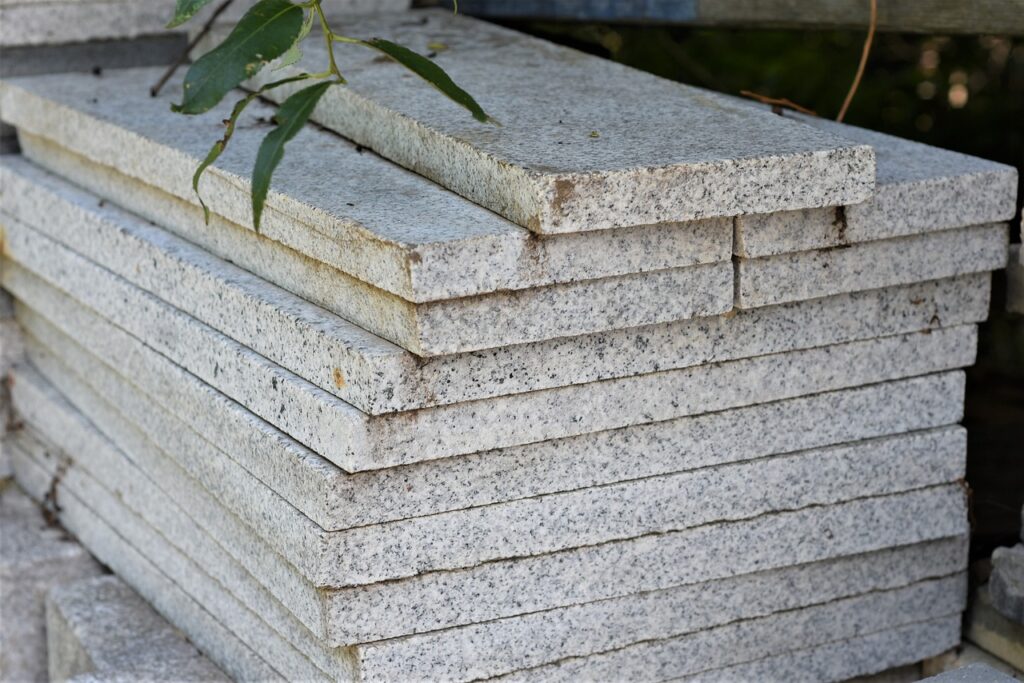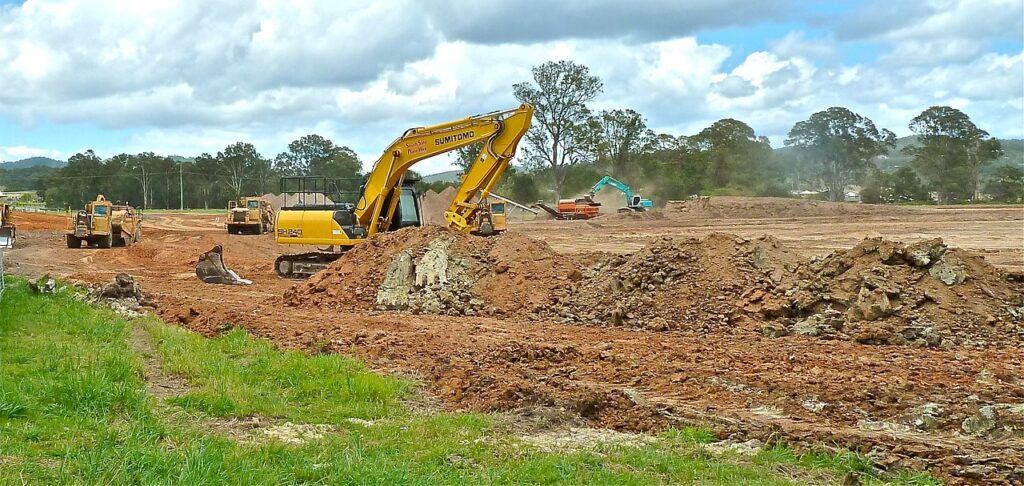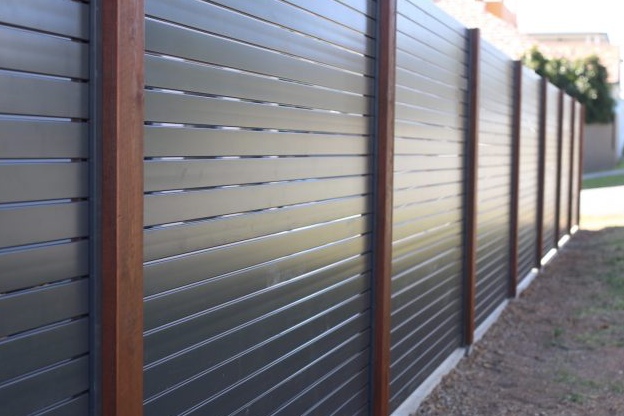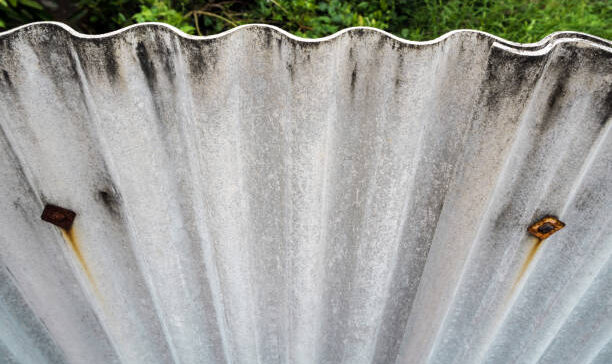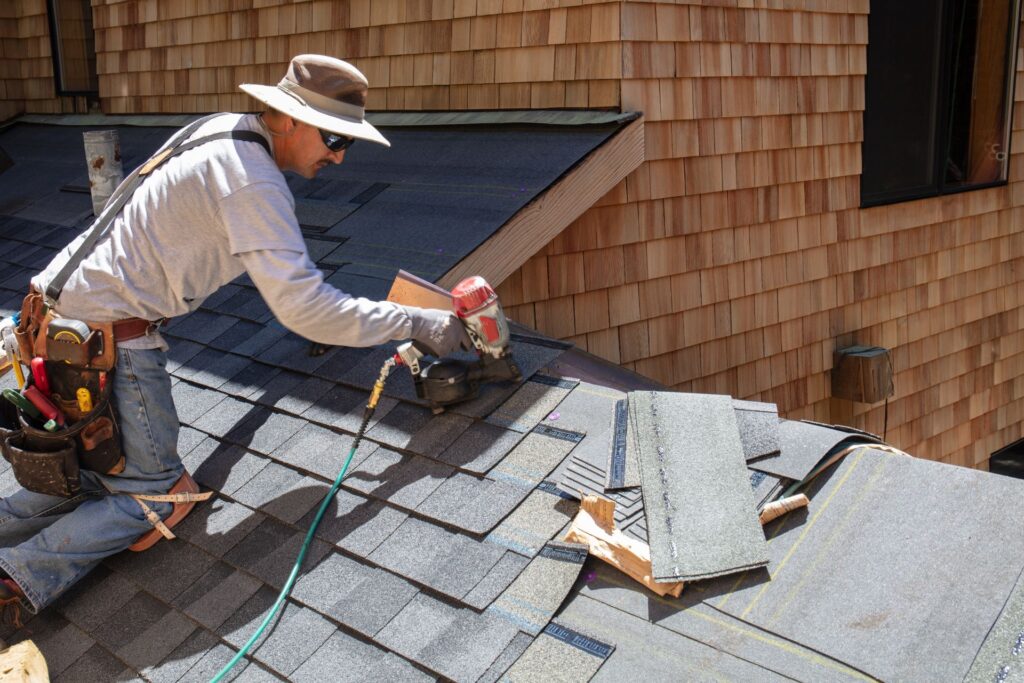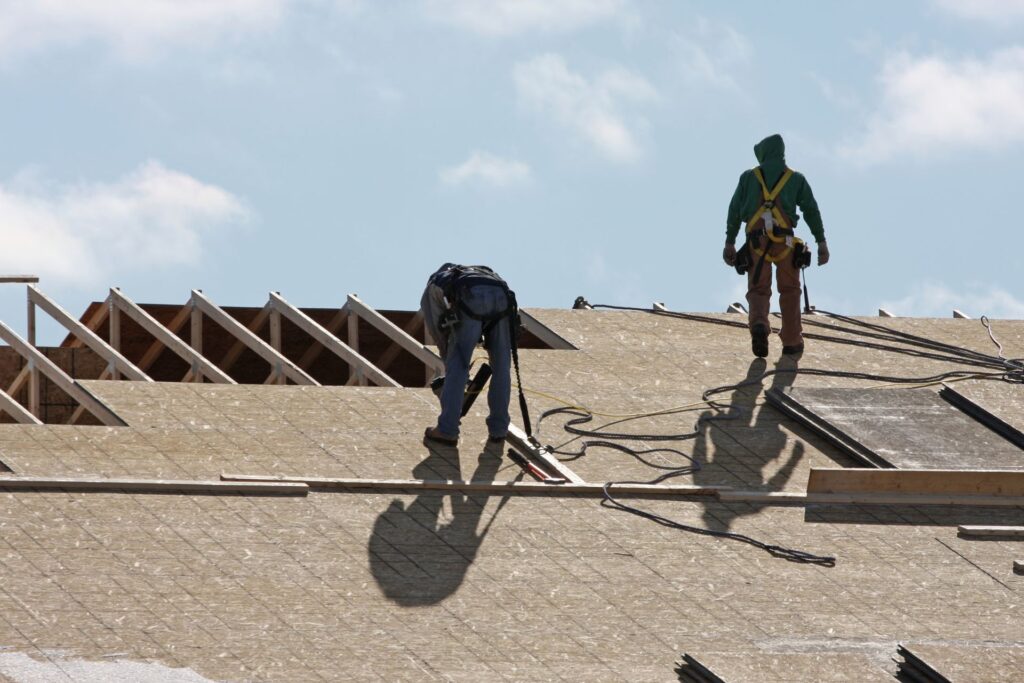Building the perfect home starts with a strong foundation, and in New Zealand, concrete slab foundations are the go-to choice for most homeowners. If you’re planning a construction project, knowing what goes into the cost of these foundations is essential. Our detailed guide takes you through the ins and outs of concrete slab foundation pricing in NZ. We cover all the essentials – from the initial stages to financing alternatives and practical maintenance advice. Join us as we unpack the secrets to successfully budgeting for your home’s foundation, ensuring your project starts on solid ground.
In New Zealand, the cost of a concrete slab foundation typically ranges from NZD $60 to NZD $130 per square meter. This cost can vary based on factors such as the size and thickness of the slab, the type of concrete and reinforcement used, site preparation, local climate and soil conditions, labor costs, and additional features like insulation and vapor barriers. Regional cost variations are also significant, with urban areas like Auckland and Wellington generally having higher costs compared to rural locations. These prices exclude additional expenses like drainage or specific engineering needs. It’s essential for homeowners to consider these variables for an accurate budget for their construction projects.
- The Basics Of Concrete Slab Foundations NZ
- Advantages And Disadvantages
- Why Concrete Slab Foundations Are Popular In NZ
- Factors Influencing Concrete Slab Foundation Cost
- Average Costs In New Zealand
- Cost Breakdown
- Planning And Preparation
- Maintenance And Long-Term Costs Of Concrete Slab Foundations
- Potential Long-Term Costs And How To Mitigate Them
- The Role of Preventive Measures In Cost Savings
- Detailed Step-by-Step Breakdown of Concrete Slab Costs
- Practical Cost Scenarios
- Additional Resources for Concrete Foundations
- Customer Engagement and Services
- FAQs: Ultimate Guide To Concrete Slab Foundation Cost NZ
- Conclusion
- Find A Builder Connect Approved Professional Concrete Company Near You!
The Basics Of Concrete Slab Foundations NZ
Definition And Types Of Concrete Slab Foundations
1. Slab-On-Grade Foundation: The Solid Ground Approach
Experience the simplicity and efficiency of a slab-on-grade foundation, a popular choice for homes across various regions. This foundation type, renowned for its straightforward construction and cost-effectiveness, involves pouring concrete directly onto the ground. The result is a sturdy, level surface that forms the very floor of your home.
Particularly well-suited for areas with stable soil and gentle weather conditions, the slab-on-grade foundation has become a preferred option in numerous New Zealand locales. Its reliability in such environments ensures a solid base for your home, blending practicality with peace of mind.
2. Floating Slab Foundation: A Touch Of Flexibility
Experience the benefits of a floating slab foundation, a smart solution for homes built on shifting soil. Unlike traditional slab-on-grade foundations, floating slabs are not rigidly connected to your home’s walls. This unique design offers vital flexibility, allowing the slab to move slightly with the earth. In regions where ground movement is a concern, this adaptability is key. The floating slab acts as a protective buffer, effectively absorbing ground shifts. This reduces the likelihood of foundation cracks, safeguarding your home’s structural integrity. Embrace peace of mind with a floating slab foundation, designed to adapt with the earth, ensuring lasting stability for your home.
3. Monolithic Slab Foundation: All In One Piece
Imagine a solid, uninterrupted base for your home, where the foundation, floor slab, and footing are seamlessly fused into one unbroken piece. Welcome to the world of monolithic slab foundations. This method stands out for its efficiency in both time and cost, skillfully minimizing seams and joints. The result? A significantly reduced risk of water seeping in, ensuring a robust and seamless foundation for your dream home. Choose a monolithic slab foundation for a sturdy and streamlined start to your home-building journey.
4. Post Tension Slab Foundation: Adding Tension To Strength
When dealing with expansive or tough soil environments, the post-tension slab foundation is your go-to solution. This technique involves pouring concrete, followed by carefully positioning and tensioning high-strength steel cables within it. This additional step fortifies the foundation, significantly reducing the likelihood of cracks and bolstering its overall strength. Choose post-tension slab foundations for a resilient and enduring base, capable of withstanding a variety of soil conditions.
5. Slab With Grade Beam Foundation: Reinforcing For Extra Strength
In the world of home construction, the foundation is key. Think of it as the unsung hero that supports your dream home from below. Now, let’s talk about a game-changer in this realm: the grade beam foundation, fused with the classic concrete slab. This dynamic duo is more than just a basic foundation; it’s a smart blend of strength and simplicity.
Imagine a concrete slab, sturdy and reliable. Now, add grade beams around the edges. These beams are the secret sauce. They spread out the weight of your home, giving it extra stability. This is especially important if you’re building on soil that’s a bit tricky or less than ideal. It’s like having a trusty support system for your home, ensuring it stands strong for years to come.
Choosing the right foundation can feel overwhelming. You’ve got to consider the soil, the climate, and of course, your budget. But here’s a pro tip: start with the concrete slab foundation. It’s a solid choice, literally. Whether it’s a cozy bungalow or a sprawling mansion, a concrete slab foundation provides a dependable base, laying the groundwork for your dream home.

Advantages And Disadvantages
Advantages And Disadvantages Of Concrete Slab Foundations In NZ
Concrete slab foundations are a widely favored option in New Zealand, offering a unique blend of benefits and challenges that impact the choices of homeowners and builders alike.
Renowned for their durability and stability, these foundations are an excellent choice for many residential properties. They provide a solid, level base that ensures structural integrity and long-lasting performance. Additionally, concrete slab foundations are known for their moisture resistance, making them an ideal solution for areas prone to dampness.
Advantages:
1. Cost-Effectiveness:
Human Touch: One of the standout features of concrete slab foundations is their cost-effectiveness. They often require less labor and materials compared to traditional foundations with basements or crawl spaces. This can significantly reduce the overall construction expenses.
Why It Matters: For the budget-conscious homeowner or builder, the ability to achieve a solid foundation without breaking the bank is a compelling reason to opt for a concrete slab.
2. Speed Of Construction:
Human Touch: Concrete slabs are relatively quick to install, speeding up the construction process. This not only saves time but also allows for faster progression to subsequent phases of the build.
Why It Matters: In a fast-paced world, where time is of the essence, the quicker construction timeline associated with concrete slabs can be a decisive factor for those looking to complete their projects promptly.
3. Suitability For Certain Soils:
Human Touch: New Zealand has diverse soil types, and concrete slabs are versatile enough to be suitable for various soil conditions. They work well in areas with stable soils, eliminating the need for extensive foundational work.
Why It Matters: The adaptability of concrete slabs to different soil types makes them a practical choice, providing a stable and reliable foundation without the need for costly soil amendments.
4. Space Efficiency:
Human Touch: Concrete slabs maximize usable space, as there are no basements or crawl spaces. This is especially advantageous for homeowners looking to maximize every square foot of their property.
Why It Matters: In urban settings where land comes at a premium, the space efficiency of concrete slabs becomes a valuable asset, allowing homeowners to make the most of their available space.
Disadvantages:
1. Limited Design Flexibility:
Human Touch: Concrete slabs can limit design options, particularly for those desiring multi-level homes. The absence of a basement or crawl space may restrict certain architectural possibilities.
Why It Matters: Homeowners with specific design preferences may find the limitations of concrete slabs a drawback, especially if they had envisioned a house with multiple levels or intricate structural features.
2. Susceptibility To Temperature Changes:
Human Touch: Concrete slabs are susceptible to temperature changes, which can lead to cracking. In areas with significant temperature fluctuations, this may necessitate additional measures such as proper insulation.
Why It Matters: Understanding the local climate and its impact on concrete slabs is crucial. Homeowners need to consider insulation and other measures to mitigate the effects of temperature changes and ensure the longevity of the foundation.
3. Difficulty In Accessing Utilities:
Human Touch: Installing or repairing utilities like plumbing can be more challenging with concrete slabs. Any issues may require breaking through the concrete, leading to additional labor and costs.
Why It Matters: For homeowners who anticipate future changes or upgrades to their utilities, the potential difficulty in accessing these systems beneath a concrete slab is an important consideration.
4. Risk Of Moisture Issues:
Human Touch: Concrete slabs are prone to moisture-related problems such as mold and mildew if proper precautions, like moisture barriers, are not in place.
Why It Matters: In regions with high humidity or areas prone to heavy rainfall, addressing moisture issues becomes paramount. Homeowners need to invest in effective moisture prevention measures to maintain a healthy living environment.
In weighing the advantages and disadvantages of concrete slab foundations, it’s essential to align these considerations with individual priorities, budget constraints, and long-term goals. The human touch in decision-making involves understanding personal needs and finding the balance that ensures a stable, cost-effective, and comfortable living space for years to come.

Why Concrete Slab Foundations Are Popular In NZ
In New Zealand, the choice of concrete slab foundations is increasingly preferred for a variety of important reasons. One of the key factors is the country’s seismic activity. The robust nature of these foundations provides essential stability and plays a significant role in reducing damage when earthquakes occur.
Another advantage lies in New Zealand’s generally mild climate. Slab foundations are known for their excellent thermal mass, making them highly effective in maintaining comfortable indoor temperatures. This is a big plus for homeowners looking to keep their homes cozy without excessive energy use.
Additionally, the quick construction time and affordability of concrete slab foundations are hard to beat. They resonate well with the efficient and practical approach that’s characteristic of Kiwi construction projects. These factors combined make concrete slab foundations not just a trend, but a smart choice for building in New Zealand.

Factors Influencing Concrete Slab Foundation Cost
When planning to construct a building, one of the critical decisions involves choosing the type of foundation. Concrete slab foundations are a popular choice due to their durability and strength. However, the cost of installing a concrete slab foundation can vary widely depending on several factors. This article delves into the primary elements that influence the cost of a concrete slab foundation, providing valuable insights for homeowners, contractors, and builders.
1. Size And Thickness Of The Slab
The size and thickness of the concrete slab are among the most significant cost determinants. Larger slabs require more materials and labor, increasing the overall cost. Similarly, a thicker slab, which might be necessary for supporting heavier structures or in areas with specific building codes, will also elevate the expenses.
2. Type Of Concrete And Reinforcement Used
The cost varies depending on the type of concrete and reinforcement materials. High-strength concrete or specialized mixtures like fiber-reinforced concrete can be more expensive. Additionally, the use of steel bars or wire mesh for reinforcement adds to the cost but is crucial for structural integrity, especially in earthquake-prone areas.
3. Site Preparation And Accessibility
Preparing the site for a concrete slab involves clearing, grading, and sometimes compacting the soil. Sites with easy accessibility and minimal preparation requirements will typically incur lower costs. Conversely, difficult-to-access sites or those requiring extensive excavation, tree removal, or grading can significantly increase the foundation cost.
4. Local Climate And Soil Conditions
Climate and soil types play a crucial role in foundation costs. Areas with extreme weather conditions may require special construction techniques or materials. Similarly, soils with poor bearing capacity or expansive clay can necessitate additional groundwork and reinforcement, raising the cost.
5. Labor Costs
Labor costs vary widely based on the location and the complexity of the work. Skilled labor in high-demand regions or urban areas tends to be more expensive. Additionally, complex foundation designs that require more time and expertise will naturally increase labor costs.
6. Building Codes and Permits
Local building codes and the need for permits can also influence the cost. Adhering to specific regulations might require additional materials or design changes, impacting the overall expense. The cost and time involved in obtaining permits should also be considered.
7. Additional Features
Features such as under-slab insulation, vapor barriers, and drainage systems, while beneficial for energy efficiency and moisture control, can add to the cost. These features, though optional, can provide long-term benefits and are worth considering.
Understanding the factors influencing the cost of a concrete slab foundation is essential for budgeting and planning a construction project. By considering the size and thickness of the slab, type of concrete, site preparation needs, local climate and soil conditions, labor costs, building codes, and additional features, one can make informed decisions that balance cost with quality and durability. Remember, a well-constructed foundation is an investment in the longevity and safety of your structure.
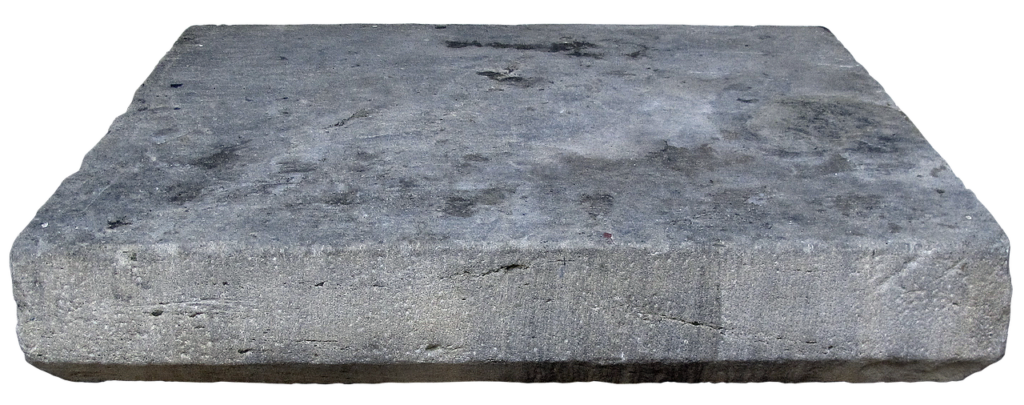
Average Costs In New Zealand
When planning a construction project in New Zealand, it’s crucial to have a clear understanding of the costs involved, especially for something as fundamental as concrete slab foundations. Across the nation, these costs vary, influenced by a myriad of factors. A typical homeowner might pay between NZD 60 to NZD 130 per square meter, considering basic materials and labor. This range, however, doesn’t include additional expenses like site preparation, drainage, or specific engineering needs.
Exploring Regional Cost Variations
The price for laying a concrete slab foundation isn’t uniform across New Zealand. In bustling urban centers like Auckland and Wellington, costs are generally higher due to elevated labor expenses and living costs. Conversely, in more rural areas, you might find more economical rates. These discrepancies are shaped by factors such as the proximity to material suppliers, which can reduce transportation costs, regional labor charges, local building regulations that might necessitate specific construction standards, and the accessibility of the construction site, where more remote locations can inflate costs.
Real-World Cost Examples
To put these costs into perspective, consider a comparison between two projects: In Christchurch, a 100 sqm concrete slab was completed at NZD 100 per sqm, totaling NZD 10,000. Meanwhile, a similar project in Auckland reached NZD 13,000, reflecting the region’s higher costs. These cases underscore the importance of location in determining overall expenses.

Cost Breakdown
When budgeting for a concrete slab foundation, it’s important to consider every aspect that contributes to the final cost. This includes the price of materials like concrete and reinforcement mesh, labor charges for skilled workers, site preparation tasks, the creation of formwork, and any required inspections or permits.
Tips For Cost-Efficiency
Balancing cost-effectiveness with quality is key in any construction project. Homeowners can achieve this by comparing quotes from different contractors to ensure competitive pricing, considering bulk purchases for larger projects, collaborating with professionals for an efficient foundation design, and scheduling construction during less busy seasons to potentially benefit from lower rates.
Be Aware Of Hidden Costs
There are often unforeseen expenses in construction projects. These can include additional groundwork for challenging soil conditions, cost increases due to changes in the project scope, the need for specialized drainage solutions, and extra charges to comply with specific building codes. Being aware of these potential hidden costs helps in better planning and budget management.
Understanding the nuances of pricing for concrete slab foundations in New Zealand is vital for anyone embarking on a construction project. By considering regional variations, preparing for a range of costs, and being aware of potential additional expenses, homeowners can approach their projects with a well-informed, cost-effective strategy.
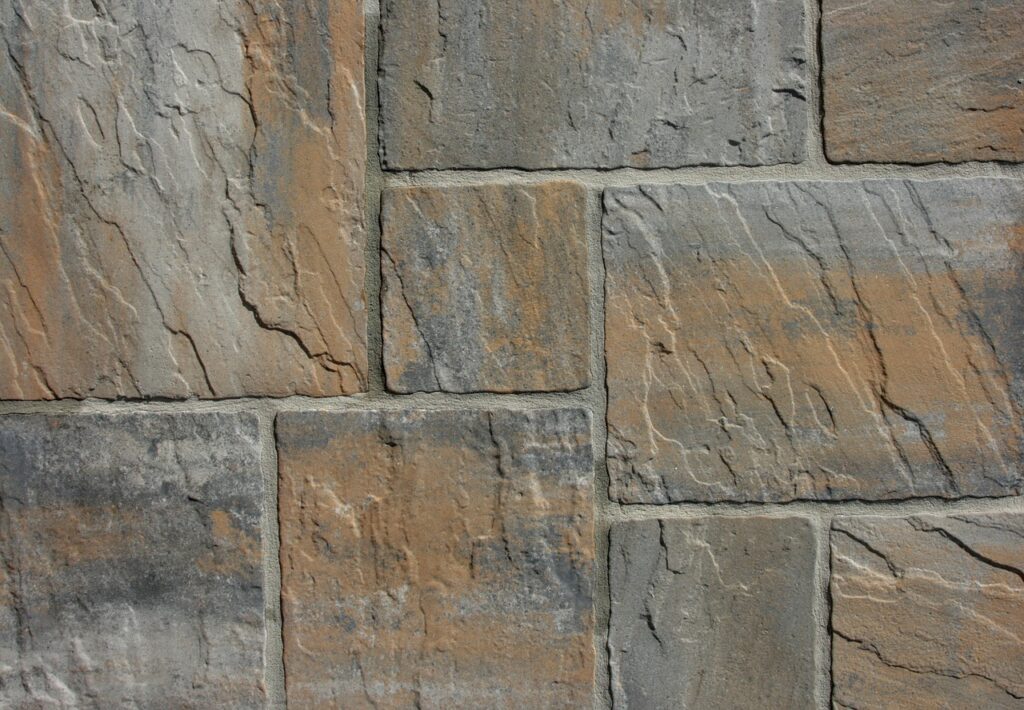
Planning And Preparation
When it comes to any construction or remodeling project, planning and preparation are the cornerstones that can make or break the entire process. Embarking on such an endeavor without a detailed plan is like setting sail without a map. It’s not just about having a vision; it’s about meticulously preparing to turn that vision into reality. This preparation involves collaborating with architects and contractors, understanding the importance of thorough planning, and ensuring that all necessary permits and approvals are in place. Let’s delve into these critical aspects to ensure your project runs as smoothly as possible.
Importance Of Thorough Planning
The first and most crucial step in any project is thorough planning. This phase is where you lay the foundation of your entire project. It’s not just about deciding on the aesthetics; it’s about considering every minute detail. Thorough planning involves budgeting, timeline setting, material selection, and contingency planning. It’s about anticipating challenges and preparing solutions in advance. This approach helps in avoiding common pitfalls like cost overruns, delays, and unmet expectations.
Effective planning is also about setting realistic goals. It’s important to balance your desires with what is practically achievable within your budget and time constraints. This is where detailed research and consultation come into play. Understand the market, compare prices, and get a grasp on what’s trending and what’s timeless. Remember, the more detailed your plan, the smoother the execution will be.
Working With Architects And Contractors
Selecting the right team is as crucial as the project itself. Architects and contractors are the maestros who will bring your vision to life. When choosing these professionals, it’s essential to look for experience, reputation, and a portfolio that resonates with your style and needs.
Working closely with architects helps in refining your vision. They can offer insights and suggestions that you might not have considered. Their expertise in design, ergonomics, and functionality can elevate your project to a whole new level. They can also help in creating detailed blueprints and 3D models, which can give you a clearer picture of the final outcome.
Obtaining Necessary Permits And Approvals
No matter how well you plan or who you collaborate with, your project cannot proceed without the necessary permits and approvals. This step is critical as it involves adhering to local building codes and regulations. The process can be complex and time-consuming, but it’s non-negotiable.
Start by researching the specific requirements for your locality. You might need different types of permits depending on the nature and scope of your project. This can include building permits, electrical permits, plumbing permits, and more. Sometimes, your project might also need to be approved by a local planning commission or a homeowners’ association.
It’s advisable to start this process early, as obtaining permits can be a lengthy process. In some cases, your architect or contractor can assist you in this process, leveraging their experience and knowledge of local regulations. Ensuring that all your paperwork is in order not only keeps you legally compliant but also ensures safety and standard adherence.
Planning and preparation are the scaffolding of any construction or remodeling project. By emphasizing thorough planning, collaborating effectively with architects and contractors, and ensuring compliance through necessary permits and approvals, your project stands a much better chance of being successful, efficient, and stress-free. Keep these factors in mind, and you’re well on your way to turning your vision into a tangible, well-crafted reality
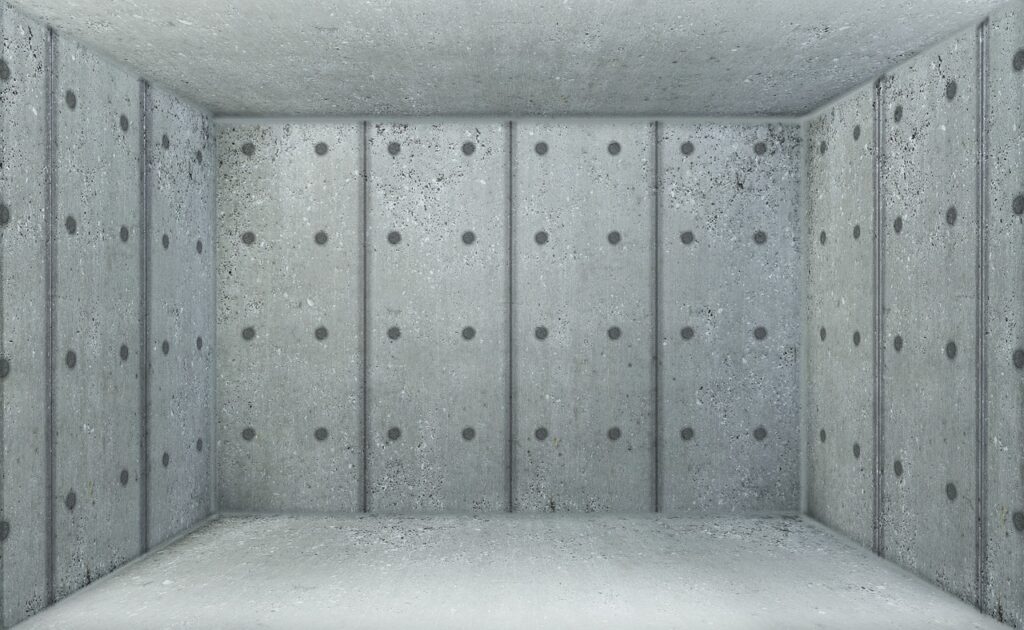
Maintenance And Long-Term Costs Of Concrete Slab Foundations
Concrete slab foundations are a popular choice for many homes and buildings due to their durability and strength. However, like any other type of foundation, they require regular maintenance to ensure their longevity and performance. Understanding the maintenance needs and potential long-term costs associated with concrete slab foundations can help homeowners and property managers make informed decisions and save money in the long run.
Regular Maintenance Tips For Concrete Slab Foundations
Maintaining a concrete slab foundation is crucial in preventing major repairs down the line. Here are some essential tips to keep in mind:
1. Inspect Regularly
Conduct routine inspections of your foundation for any signs of damage, such as cracks, shifting, or sinking. Look for uneven floors inside your home or gaps around doors and windows, as these can also be indicators of foundation issues. Early detection of these problems is critical, as it allows for timely interventions that can prevent more serious and costly repairs later on. Additionally, keeping a record of any changes over time can help professionals diagnose and address issues more effectively.
2. Control Moisture Levels
Excessive moisture is a major enemy of concrete foundations, as it can lead to significant problems such as cracking, shifting, and even mold growth. Ensure proper drainage around your home to effectively keep water away from the foundation. This includes not only ensuring that the landscape slopes away from the foundation but also maintaining gutters and downspouts. Gutters and downspouts should be regularly cleaned and in good repair, directing water at least a few feet away from the foundation to prevent pooling.
3. Maintain A Consistent Soil Moisture Level
The soil around your foundation should have consistent moisture levels to prevent expansion and contraction, which can lead to cracks. This balance is crucial because extreme dryness can cause the soil to shrink, while excessive moisture can lead to swelling, both of which put undue stress on your foundation. Consider using soaker hoses during dry periods to maintain moisture, and during wet seasons, ensure proper drainage to avoid oversaturation.
4. Prevent Tree Root Intrusion
Tree roots, in their search for nutrients and water, can extend far and wide, potentially causing significant damage to concrete foundations. This damage often manifests as cracks or upheavals, compromising the structural integrity of your home. To prevent such issues, it’s crucial to plant trees at a safe distance from your house, ideally beyond the reach of their mature root systems.
5. Regular Cleaning And Sealing
Keeping the concrete clean and sealed is a vital step in protecting it from weathering and cracking, which are common issues that can compromise the integrity of a foundation. Regular cleaning helps to remove harmful substances such as dirt, oil, and other contaminants that can weaken the concrete over time.
Applying a high-quality concrete sealant, as recommended by foundation professionals, creates a barrier against moisture and other environmental factors, further enhancing the surface’s durability. This sealant should be reapplied periodically, according to the manufacturer’s guidelines, to maintain its protective properties and extend the life of your concrete slab foundation.
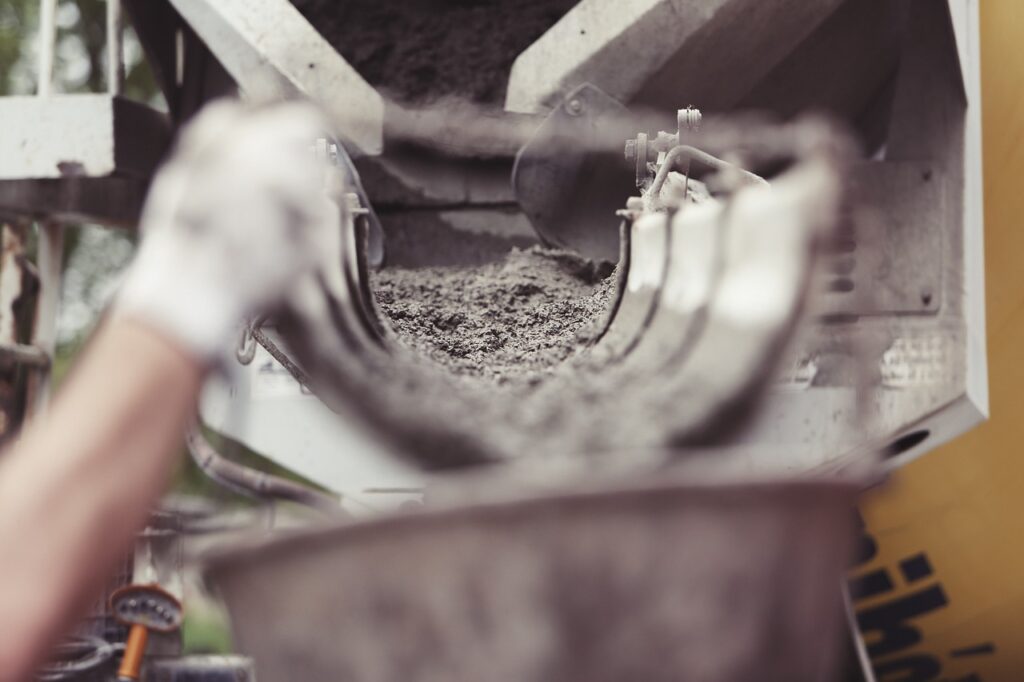
Potential Long-Term Costs And How To Mitigate Them
Concrete slab foundations, while robust, can incur long-term costs if not properly maintained. These costs can arise from:
Crack Repairs
Small cracks in a foundation, while seemingly minor, can escalate if not addressed promptly. Addressing these early can be relatively inexpensive and prevent further damage. On the other hand, larger, structural cracks represent a more serious concern. Not only are they costly to repair, but they also indicate potential underlying issues with the foundation’s stability and may require comprehensive assessment and intervention by professionals. Therefore, timely action on small cracks is a financially prudent strategy to avoid these more significant and expensive repairs.
Water Damage Repairs
Improper drainage can lead to water damage, which can be expensive to rectify. This water damage not only affects the foundation but can also lead to issues like mold growth and structural weakening of the entire building. Furthermore, the longer these drainage issues are left unaddressed, the more costly and complex the repair process becomes, impacting both the foundation and potentially other parts of the property.
Foundation Leveling Or Underpinning
If a foundation settles or shifts significantly, it may require leveling or underpinning, which can be a substantial expense. These processes involve the adjustment or reinforcement of the foundation to restore its original position or to strengthen it, which can be both time-consuming and costly.
To mitigate these costs, proactive maintenance is key. Regular inspections, addressing small issues promptly, and ensuring proper drainage can go a long way in preventing expensive repairs.

The Role of Preventive Measures In Cost Savings
Investing in preventive measures is often more cost-effective than dealing with major repairs. These measures include:
Installing Quality Drainage Systems
Good drainage plays a pivotal role in safeguarding your home’s foundation from water-related issues. Ensuring that water flows away from the foundation effectively can prevent a myriad of problems, such as soil erosion, which can lead to uneven settling and cracks in the foundation. Additionally, proper drainage helps to mitigate the risk of basement flooding and mold growth, both of which can cause significant damage to the structure and interior of your home. Regularly cleaning gutters, installing downspouts, and maintaining the slope of the ground around your home are key measures in maintaining optimal drainage.
Using High-Quality Building Materials
During construction or repairs, using high-quality materials is essential in enhancing the longevity of your foundation. Opting for superior quality concrete, reinforcing steel, and waterproofing products not only adds years to the life of the foundation but also ensures better resistance against environmental stresses like moisture and temperature changes. Furthermore, investing in top-grade materials can significantly reduce the likelihood of frequent repairs, thereby providing long-term financial savings and maintaining the structural integrity of the building.
Hiring Professionals For Regular Check-Ups
Periodic assessments by foundation experts are not only crucial for early detection of potential problems but also provide an opportunity to gain expert advice on maintenance practices tailored to your specific foundation type. These regular check-ups can help catch issues early, often when they are more manageable and less expensive to fix, thus saving a considerable amount of money in the long run. Moreover, these professionals can offer insights into the latest techniques and materials that can enhance the durability and longevity of your foundation.
Educating Yourself And Staying Vigilant
Being knowledgeable about the common issues and signs of foundation problems can help you act swiftly when something arises.
Regular maintenance and preventive measures are crucial in managing the long-term costs associated with concrete slab foundations. By staying informed and proactive, homeowners and property managers can ensure the stability and durability of their foundations, ultimately saving money and avoiding significant hassles in the future.

Detailed Step-by-Step Breakdown of Concrete Slab Costs
Understanding the full cost of a concrete slab foundation in New Zealand involves more than just the price of concrete. The cost is influenced by multiple factors including earthworks, engineering, climate zone considerations, and the type of piles used. Breaking down these components will give you a clearer picture of where your money goes and how you can plan effectively.
Earthworks: The initial site preparation is a crucial step. If your site is flat and free from obstructions, costs will be lower. However, if your site requires extensive leveling, excavation, or removal of debris, the costs can rise significantly. Always consider this when planning your budget.
Engineering Requirements: Depending on your location and the soil type, additional engineering might be necessary to ensure a stable and compliant foundation. This could involve the use of additional steel reinforcement, thicker concrete layers, or specific engineering designs to cope with challenging soil conditions. While these add to the initial cost, they are essential for long-term durability and safety.
Climate Zones: New Zealand’s diverse climate means that foundation requirements can vary significantly. For example, in colder regions, frost protection is necessary to prevent the ground from freezing and expanding, which can damage the slab. This often involves additional insulation layers beneath the slab, adding to the overall cost but ensuring the foundation remains intact through varying temperatures.
Pile Types: The type of piles used also influences cost. While standard timber piles might suffice in certain areas, more challenging ground conditions may require the use of more expensive materials like steel or concrete piles. Understanding the soil composition of your site will help determine the most cost-effective yet durable solution.
Practical Cost Scenarios
To help you estimate the potential costs for your specific project, consider these scenarios:
- Standard Residential Project: For a standard home on a flat, well-drained site with good soil, the costs are likely to be on the lower end. Minimal earthworks, standard engineering, and basic pile types will keep your expenses manageable.
- Complex Terrain: If your project is on a sloping site or in an area with poor soil, the costs will increase. Extensive earthworks, specialized engineering, and robust pile solutions will be necessary, leading to higher overall expenses.
- Cold Climate Construction: Building in a colder climate? Be prepared for additional insulation costs to protect your foundation from frost damage. This investment is crucial for long-term performance, especially in regions where temperatures regularly drop below freezing.
Additional Resources for Concrete Foundations
When planning your project, it’s beneficial to explore different foundation options and related topics:
Waffle Slabs: A waffle slab might be a more cost-effective option in certain situations, particularly for sites with expansive soils. This type of foundation offers enhanced load distribution and may reduce the need for extensive earthworks or additional insulation.
Understanding New Zealand Ground Conditions: Different regions in New Zealand present unique challenges for foundation construction. From sandy soils in coastal areas to rocky terrains in the hills, knowing what to expect can help you plan better and avoid unexpected costs.
Engineering Consultation: Engaging with a professional engineer early in your project can offer cost-saving design suggestions. They can provide insights into the most efficient ways to achieve a stable and compliant foundation, potentially saving you money in the long run.
Customer Engagement and Services
At Builder Connect, we’re not just about providing information—we’re here to help you through every step of your construction journey. Early engagement with our team can lead to substantial cost savings through design optimizations and efficient planning. We offer no-obligation quotes and are ready to provide tailored advice for your specific project needs.
By following the guidance in this comprehensive blog, you’ll be well-equipped to understand the complexities of concrete slab foundation costs in New Zealand. With this knowledge, you can confidently embark on your construction project, knowing that you’ve made informed decisions that will benefit you both now and in the future.
FAQs: Ultimate Guide To Concrete Slab Foundation Cost NZ
Conclusion
In conclusion, this comprehensive guide expertly navigates the complexities of concrete slab foundations in New Zealand, offering valuable insights for homeowners and builders alike. It thoroughly explores various types of foundations, weighing their advantages and disadvantages in the context of New Zealand’s unique climate and soil conditions. The guide also delves into the factors influencing foundation costs, providing real-world cost examples and regional variations that are crucial for accurate budgeting.
Moreover, it emphasizes the importance of planning and preparation, highlighting the roles of architects, contractors, and necessary permits in ensuring a successful project. The discussion on maintenance and long-term costs is particularly enlightening, offering practical tips and emphasizing the role of preventive measures in cost savings.
Overall, this post serves as an indispensable resource for anyone considering a concrete slab foundation in New Zealand, blending technical detail with practical advice to ensure the longevity and stability of their investment.
Find A Builder Connect Approved Professional Concrete Company Near You!
- Christchurch Concrete Services
- Concrete Contractors Nelson
- Concrete Contractors Tauranga
- Concrete Dannevirke
- Concrete Driveways Lower Hutt
- Concrete Driveways Upper Hutt
- Concrete Foundations Kapiti
- Concrete Layers Auckland
- Concrete Layers Cambridge
- Concrete Layers Hamilton
- Concrete Layers Invercargill
- Concrete Layers Kapiti
- Concrete Layers Leigh
- Concrete Layers Levin
- Concrete Layers Mangawhai
- Concrete Layers Matakana
- Concrete Layers Northland
- Concrete Layers Orewa
- Concrete Layers Palmerston North
- Concrete Layers Pukekohe
- Concrete Layers Rodney
- Concrete Layers Silverdale
- Concrete Layers Te Awamutu
- Concrete Layers Upper Hutt
- Concrete Layers Waikato
- Concrete Layers Warkworth
- Concrete Layers Wellington
- Concrete Layers Wellsford
- Concrete Manuwatu
- Concrete Services Rotorua
- Concrete Whangarei
- Hastings Concrete Company
- Hawkes Bay Concrete Company
- Napier Concrete Company
About the Author:
Mike Veail is a recognized digital marketing expert with over 6 years of experience in helping tradespeople and small businesses thrive online. A former quantity surveyor, Mike combines deep industry knowledge with hands-on expertise in SEO and Google Ads. His marketing strategies are tailored to the specific needs of the trades sector, helping businesses increase visibility and generate more leads through proven, ethical methods.
Mike has successfully partnered with numerous companies, establishing a track record of delivering measurable results. His work has been featured across various platforms that showcase his expertise in lead generation and online marketing for the trades sector.
Learn more about Mike's experience and services at https://theleadguy.online or follow him on social media:

